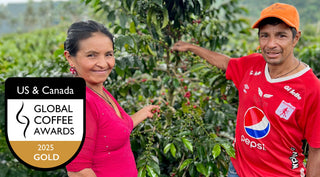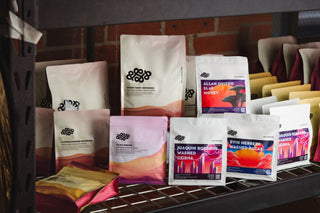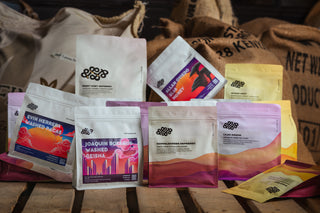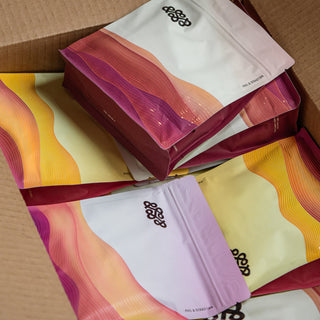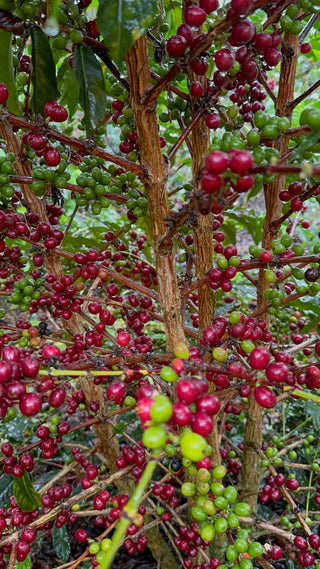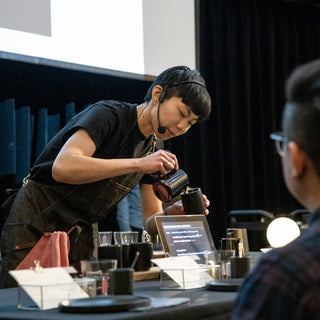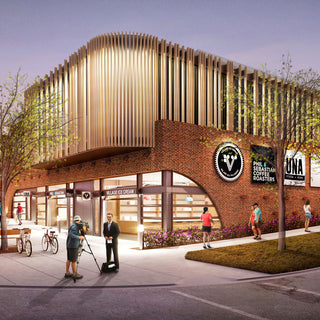The region of Santa Barbara in Honduras has something quite special. A combination of soil, weather and coffee varietals make the coffees in this area some of the most exotic and interesting coffees in the world. This harvest will mark the 4th season since we started working with the producers in Santa Barbara. One of these great producers is Margarito Herrera. Margarito lives in the upper end of El Cielito, one of the tiny coffee producing municipalities of Santa Barbara. His dad, Juan Rodriguez, once had a good amount of land in the region, and gave most of it away to his children. Juan, along with his children, historically sold their coffee to the “mercado corriente”, the commodity market. They lived a simple life in poverty, barely making ends meet.
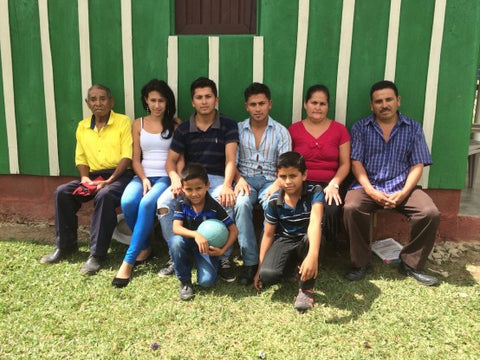
Margarito and his family. Juan is wearing the yellow shirt.
I first visited Santa Barbara in December of 2012. I visited San Vicente, a local exporter largely responsible for the development of this region. I travelled around the area with Arturo Paz, one of the principals of San Vicente, who amongst many other things, is responsible for QC of the coffees. Arturo and I went to visit Margarito, who had decided to submit a sample of coffee to see the potential and decide if he wanted to begin selling coffee as specialty as opposed to commodity. This was not an easy decision at the time, since specialty is much more time-consuming and demands a lot more attention to detail. I was instantly intrigued by Margarito’s potential since the upper El Cielito region is tiny and the few producers who have farms there all have amazing coffee. Arturo and I returned to the lab at San Vicente later that day and roasted and cupped Margarito’s coffee. We were both blown away. Powerful fruit, vibrant acidity, nectar-like sweetness – an instant winner. I committed to buying all of Margarito’s harvest ever since.
Our model and my approach has been to share some of our lessons learned from our green buying projects with Margarito. Then, explore with him whether any of these may help him improve his coffee. Finally, we work together to introduce some changes to his processing with the hopes of seeing improvements in his coffee and creating more consistency. For him, consistency is important as it allows him to have peace of mind that the coffee will find a good market (i.e. he will receive a good amount of money for it).
When I visited again in March of 2013, I also met Margarito’s father Juan, and we agreed to add his coffee to Margarito’s so we can also purchase all of Juan’s production. Between the two of them, they produced a mere 12 bags. That year Margarito also entered a 10-bag lot into the Honduras Cup of Excellence, where he placed 19th and used the money from the CoE to purchase some more land the highlands of El Cielito. After the 2013 harvest, we continued to work with Margarito and Juan to help them build proper infrastructure. By 2014, they had re-done their fermentation tanks and Margarito built a very nice parabolic sun drier so he could dry his own coffee — the coffee was once again amazing.
In 2015, Margarito further improved his drying by adding shade to the dryer and, thanks to the upper farm, Margarito was able to now produce 18 bags to export. Comparing to 2012 at commodity prices, his earnings from coffee multiplied a whopping 10 times! This is due to receiving much higher prices, but also to the fact that thanks to the higher prices, he was able to invest more into the productivity of his farm.
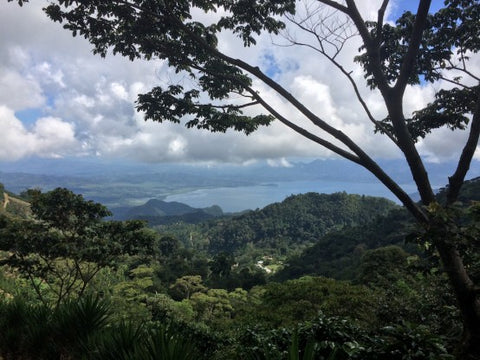
A view of the Yojoa Lake from Margarito’s house.
During this visit, I wanted to pick Margarito and Juan’s brains and find out if they are happy with our arrangement, both financially and operationally. Financially, I can see with my own eyes the improvement in their living conditions. When I first visited Margarito, there was no road to his house, his house was one single big room, with mud floors and an outdoor bathroom. Now, he has built a new house which is definitely much more comfortable than before. He assured me he is happy and grateful for having the peace of mind that we’re buying his coffee at a very good price. Operationally, I wanted to make sure that all the details I asked them to do over the last few years are viable and sustainable for their coffee production. Both him and Juan felt that although some of the asks seemed onerous at first, they and their workers have become used to them now and they are able to do them without major headaches.
The other purpose of the visit was to deliver Margarito and Juan some bonuses for achieving certain milestones. Before the harvest, I had agreed to pay them a bonus of $150 USD if all of their coffee was dried to the right endpoint and if the coffee still tasted great a few months after arriving in Calgary. They nailed both of these and so I was happy to pay them the money. They were both extremely grateful and happy, especially because receiving money during the non-harvest period is particularly helpful for their cash flow. Although $150USD may not seem like a lot in Canada, it goes a long way in the remote hills of El Cielito.
Finally, we chatted about the upcoming harvest. Since their production has steadily increased, they are in need of another drying structure. For Margarito and Juan, this is a difficult time of year to spend money, since they don’t receive funds from their coffee until the end of their harvest (June). In order to facilitate the investment, I agreed to finance the cost of the materials for a new dryer, which will help them dry the coffee without worrying about capacity. This is especially important since this year Margarito and Juan will be drying their coffee in 100% shade, which will prolong drying times but greatly help in maintaining the coffee’s high quality over time.
This year we will also be trying out coffee from Margarito’s niece Rosely. She has a farm next to Margarito and is wanting to also work with us under a similar arrangement. Although I have never tasted Rosely’s coffee, I have little doubts it will be amazing since she has the same varieties as Margarito and very similar growing conditions. We will also be doing a very similar incentive program for quality control which I will be paying out during my pre-harvest visit next year. Margarito’s coffee has improved every year since 2013 and I can’t wait to see what happens this coming year.
I am personally very proud to work the Margarito. His work ethic and tenacity have been the keys to his success and I have enjoyed being able to play a small role in his growth as a coffee producer.
- Sebastian
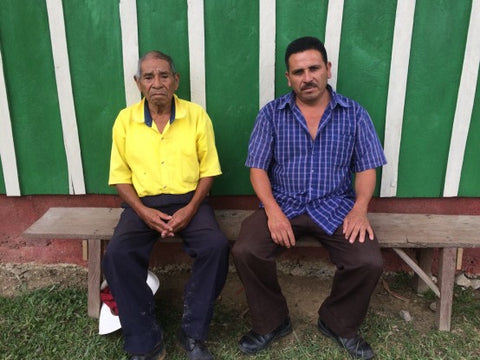
Juan and Margarito.

